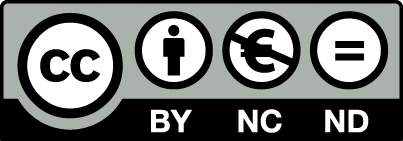The preparation stage is a strategic phase for the proper development of the project, it is the stage where the working committees and the tools of communication and visibility are started, the Plans begin to be executed (evaluation, quality, risk management…), and the logistical, practical and administrative agreements are closed.
This stage begins once the PROJECT DESIGN STAGE has been completed, and lasts until the first transnational meeting is held.
This phase included the following activities:
(A1) REVIEW OF THE PROJECT, according to the SEPIE report, leader.
It is a phase where the project and the agreements with the partners are reviewed, adapting them to the resolution of the call, taking into account the modifications proposed by the evaluators, incorporating the new proposals, and adjusting the budget, duration, and number of attendees to those approved, adjusting the final schedule to these changes and the recommendations of safety for COVID-19.
In any case, the project and established plans are always reviewed to incorporate novelties and/or new opportunities that may have appeared or that we have reinforced from the moment the project was designed until its start (incorporation of new informal collaborating entities, new people who join our team, etc.).
This activity will be carried out via Google Drive to share documents (SEPIE report, partner agreements…), and with virtual meetings.
(A2) STRENGTHENING OF THE PARTNERSHIP AND AGREEMENTS: the logistical, practical, and administrative agreements are closed, maintaining as a framework of collaboration the previous agreements and being updated with the review of the project (A1).
(A3) START OF THE COMMUNICATION AND VISIBILITY TOOLS: the different communication channels that will be used during the project will be launched, attending to the degree of formality of the message (mail, social networks, etc.).
(A4) START OF THE WORKING COMMITTEES, constitution and assignment of tasks and managers, development of Gantt charts to specify activities, tasks, and persons responsible at each level.
The processes of selection of the participants started in a public and transparent way of those responsible and people participating in the different activities and commissions under the criteria established jointly between the entities, and each commission carried out its first tasks.
(A5) START OF THE PLANS (evaluation, quality, dissemination …): the materials, guides, and document that serves as support for the management of the plans were made available to all entities, shared in Google Drive, and allowed us to ensure that all participating entities carry out national and international activities under the same quality standards and parameters that later allowed for a global evaluation of the impact of the project in all entities and countries.
(A6) VISIBILITY ACTIVITIES of the Erasmus+ Programme and the Project: the CORPORATE IMAGE OF THE PROJECT AND ITS WEBSITE was created.
(A7) SEARCH FOR NEW INFORMAL PARTNERS: talks and project presentation meetings were held to give visibility to the project and to include new partners who can use its results and/or disseminate them. It was the responsibility of each entity to promote this process in their country.
(A8) TRAINING ACTIVITIES FOR PARTNER / PARTICIPATING ENTITIES: they focused on ensuring the training of all participants, promoting their full participation, and in the exchange of experiences and good practices to incorporate them into the project (tools, methodology, manuals, etc.). This training was carried out virtually and was adapted to each entity or person, providing them with materials for the use of ICTs that were used during the project, quality and evaluation manuals, prevention, check-lists, etc. in order to ensure the quality of the project and maximize the potential of each entity.
(A9) ACTIVITY FOR THE EVALUATION OF THE END OF STAGE: This stage ended with M1, where all activities carried out during the preparation stage were reviewed and the next stage began.
.
.




